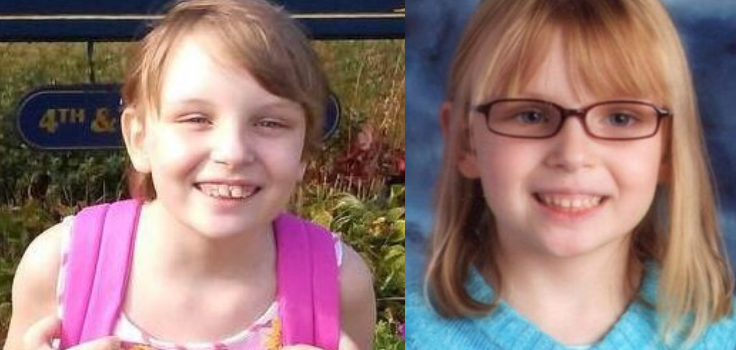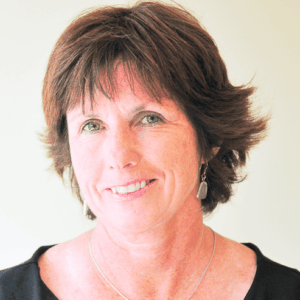Mary Wright thought she heard the news wrong.
“Four kids killed in one month?” she asked her husband.
A former school nurse, Wright was stunned. From late May through the end of June, a 6-week-old baby had been shaken to death. A 3-year-old had been beaten to death. Another 3-year-old overdosed on fentanyl. Parents had been charged in all three cases. A fourth child, a 4-year-old, fatally shot himself accidentally in his home.
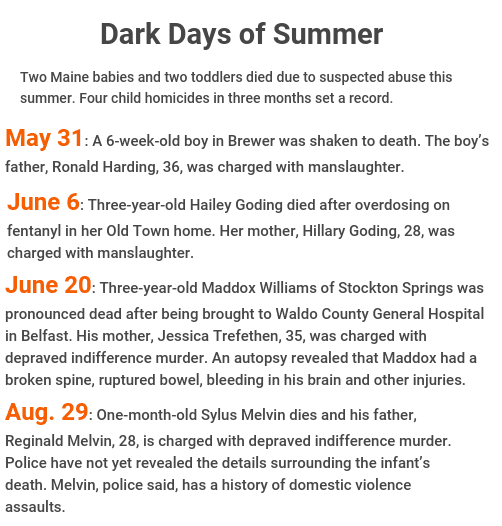
The tragedies triggered Wright’s memories of another child – a student at Fairmount School in Bangor, where Wright worked as a nurse. Images of Marissa Kennedy flashed in Wright’s mind.
Details about the 10-year-old girl replayed in her thoughts: the school’s attempts to get child welfare workers to investigate the fourth-grader’s multiple unexplained absences. The shock of learning that Marissa was tortured and brutally beaten to death in February 2018 by her parents. The promises from politicians and the Department of Health and Human Service leaders to improve the child welfare system to prevent more deaths.
“Nothing’s changed,” Wright told herself.
Wright’s colleagues shared her haunting sense of déjà vu. Fairmount’s principal, guidance counselor and Marissa’s teacher all felt a sense of dread and despair as they learned about the June deaths.
The recent murders also prompted the school staff to speak out for the first time about their memories of Marissa and their concerns about the state’s child protective services.
“The number of child deaths from parents and guardians seems to be on the rise,” said Fairmount School Principal Ryan Enman. “It’s the responsibility of all of us to protect them and to act on their behalf. Swift action needs to be taken when they are in danger.”
Enman and his staff still ask themselves: How many reports and how much evidence is needed before a child is placed in protective custody?
‘What does it take?’
“When I looked again,” Enman said, “and reviewed all the reports made (to DHHS) from our school, medical providers, police and neighbors about Marissa, it makes you wonder, what does it take to get a child removed from the home?”
There have been many sleepless nights for Enman and his staff since they learned Marissa died from battered child syndrome. They cannot forget the medical examiner’s report that explained the 10-year-old girl’s heart gave out from the chronic stress of injuries, infections and pain caused by her parents’ beatings. Her autopsy revealed that she had 50 blunt-force injuries, a lacerated liver, blood on her brain, three partially healed broken ribs, and wounds on her knees from prolonged kneeling as her parents beat her with their fists, feet, a belt buckle and mop handle.

“There’s not too many days that go by that I don’t think about her,” said Enman. “I keep two pictures of her right behind me in my office. It helps me to remember that we all have to keep child safety in the forefront.”
The first report to DHHS about Marissa came from Enman’s school in October 2016, when Marissa missed five days of school. It would be the first of the school’s six reports to the state’s Office of Child and Family Services about Marissa’s multiple absences throughout the school year.
Fairmount’s staff never saw evidence of bruises or physical abuse, but Marissa’s truancy and her stepfather’s deceit about why she missed school worried several educators at Fairmount, including Wright.
“Over the 20 years I had been a school nurse, I had made several reports to DHHS,” Wright said. “With Marissa, myself and others at the school were not only concerned, we were alarmed.”
A bespectacled, blond-haired girl, Marissa loved to read and write. When the fourth grader started sleeping much of the day in her classroom, her teacher grew concerned.
“She was an invested student so she wasn’t doing it to avoid learning,” Wright said. “So I got involved to figure out, why is this child sleeping in school?”
There was little information about Marissa, a transfer student from New York. Wright’s first thought was Marissa was on medications that made her sleepy. When she contacted Marissa’s mother, Sharon Carrillo, and her stepfather, Julio Carrillo, they said Marissa was a patient at Acadia Hospital because she behaved aggressively and needed medications.
“There wasn’t a thread of aggression in that child,” Wright said. “She didn’t have any emotional outbursts in school.”
RELATED STORY: Premature birth, premature death: The sad, tragic life of a Maine child
A nurse for nearly 50 years in the emergency room and in the classroom, Wright continued to press for answers. She visited Marissa’s home three times to try and speak with the Carrillo family, but often no one opened the door. She called Marissa’s pediatrician to check on the girl’s medications.
“We learned she wasn’t on any,” Wright said. “So every piece of information we got from Mr. Carrillo wasn’t good.”
Kristin Tlili, the school guidance counselor, shared Wright’s concerns. Tlili had been called to Marissa’s classroom when she fell asleep.
“I came to try and wake her,” Tlili said. “It was strange how sound asleep she was. I had not seen a student in that deep a sleep at school before.”
Tlili grew more alarmed as Marissa continued to miss school.
“Julio (Carrillo) said she was out for medical appointments,” Tlili said, “but we were concerned, were these appointments actually happening?”
In March 2017, Tlili spoke to medical professionals at Acadia Hospital and learned the dates Marissa was absent did not coincide with her medical appointments.
“That was around the time Marissa stopped talking to us,” Tlili said. “I’d ask her if she was told not to speak to me and she said yes.”
Tlili grew so concerned about Marissa, she altered her April vacation plans and asked Enman, the principal, to come with her to knock on the family’s door.
“I had to make sure Marissa was OK,” Tlili said.
As Tlili and Enman walked toward the family’s apartment, they saw the Carrillos leaving. Sharon held her new baby. The family also had another young child.
“I was so happy to see Marissa,” Tlili said.
Tlili and her colleagues later learned the family was in the middle of being evicted. Several months later, the school staff also discovered they weren’t the only ones calling DHHS with concerns.
15 calls to DHHS
According to a 12-page summary of Marissa’s case issued by DHHS in February 2020, neighbors reported hearing yelling and screaming from the home. One neighbor also claimed witnessing Julio Carrillo yelling and punching Marissa in the leg while they were in the car.
Police were called twice to the home by neighbors worried about violence. Marissa’s pediatrician and mental health professionals called DHHS 15 times about missed appointments and concerns about medical neglect after Marissa failed to receive in-patient and out-patient services following several emergency room visits and hospitalizations for mental health treatment.
Enman and his school staff lost contact with Marissa when her family moved to Stockton Springs and enrolled her in Searsport Elementary School in the fall of 2017. The fifth-grader continued to miss several weeks of school.
From October 2016 through August 2017, DHHS opened two investigations into the family, meeting and talking with them 20 times. Julio Carrillo often blamed the family’s troubles on Marissa and his wife Sharon’s mental health issues. Believing Marissa was not at risk, the state caseworkers referred the case to its Alternative Response Program, contracting a community organization that would offer services to the family.
On Feb. 23, 2018, the social worker for a Rockland-based community agency met with Marissa’s family in their home. She noted Marissa seemed tired, and had a bruise and small scratches on her eye, along with more bruises on her arms. Julio Carrillo told the worker Marissa had harmed herself.
Two days later, Julio Carrillo called 911 to report he found Marissa unresponsive and bleeding from the mouth in the basement. When police and EMTs arrived, Marissa lay on the floor of her bedroom. Her body was cold to the touch and stiff.
That evening, nurse Wright heard a news report about Marissa’s death while making dinner.
“I screamed,” Wright said. “I swore.”
And she told herself, “My god, he’s killed her.”

Wright’s longtime suspicions about the family were soon confirmed. Marissa’s stepfather and mother were charged with depraved indifference murder. Both were convicted of beating their daughter to death. Sharon Carrillo received a 48-year prison term. Julio Carrillo was sentenced to 55 years.
Three and a half years after Marissa’s murder, Wright, Enman and Tlili still wrestle with their memories and frustrations over trying to protect her.
School officials overlooked
Wright was often discouraged that DHHS caseworkers did not consider herself or her colleagues as important sources when investigating Marissa’s case.
“When we reported things, it wasn’t frivolous,” Wright said. “I was frustrated by the fact that frequently the workers didn’t think we were valuable resources. Seldom would a caseworker come and sit down with us, and ask the real questions that needed to be asked.”
While principal Enman and his staff understand that DHHS caseworkers are often overwhelmed and overburdened, they believe better communication and collaboration between schools, child protective workers, medical providers and police could help save future children.
Along with not knowing that Marissa’s family was evicted, Enman said they also didn’t know Marissa tried to run away and there were at least three 911 calls from her home that Julio Carrillo said were made accidentally.
“I’m not blaming DHHS for Marissa’s death,” Enman said. “There are two people responsible for her murder: Sharon and Julio. But it does seem some red flags were missed, several things that happened that weren’t followed up on.”
Though Enman believes his staff did everything possible to protect Marissa, they still wrestle with losing a child who loved to learn and had so much potential.
“For each of us the haunt has not gone away,” said Wright, who retired from Fairmount School two years ago. “I know we tried so hard to help her, but the idea that a child died, who was on some level my responsibility, is something I can’t get rid of.”
Whenever Wright hears reports about the four children who died in June, her thoughts return to Marissa, the shy girl who often walked the halls holding hands with a classmate.
“I can still see the way she looked,” Wright said, her voice cracking with emotion. “It’s all still there.”
As students return to Fairmount School this fall, several staff members continue to keep reminders and mementoes of Marissa in their offices. Marissa’s fourth-grade school picture sits on guidance counselor Tlili’s shelf. A framed piece of Marissa’s artwork hangs on her wall.
“I think of her every day,” Tlili said. “I think of how her beautiful life deserved to be so much longer.”
Marissa’s presence also reminds Tlili to remain vigilant with the 300 children who attend Fairmount School.
“I can tell you that I’m much more alert and in tune with what students say to me,” Tlili said. “I want to protect them all. Sometimes that means helping the family, and sometimes it’s empowering the child.”
A framed story that Marissa wrote for one of her assignments rests on Enman’s desk. Marissa called the story: “The Little Girl and the Blizzard.”
The story is about a girl who gets trapped in a blizzard and uses her special powers — fireballs that appear in her hand — to battle the storm.
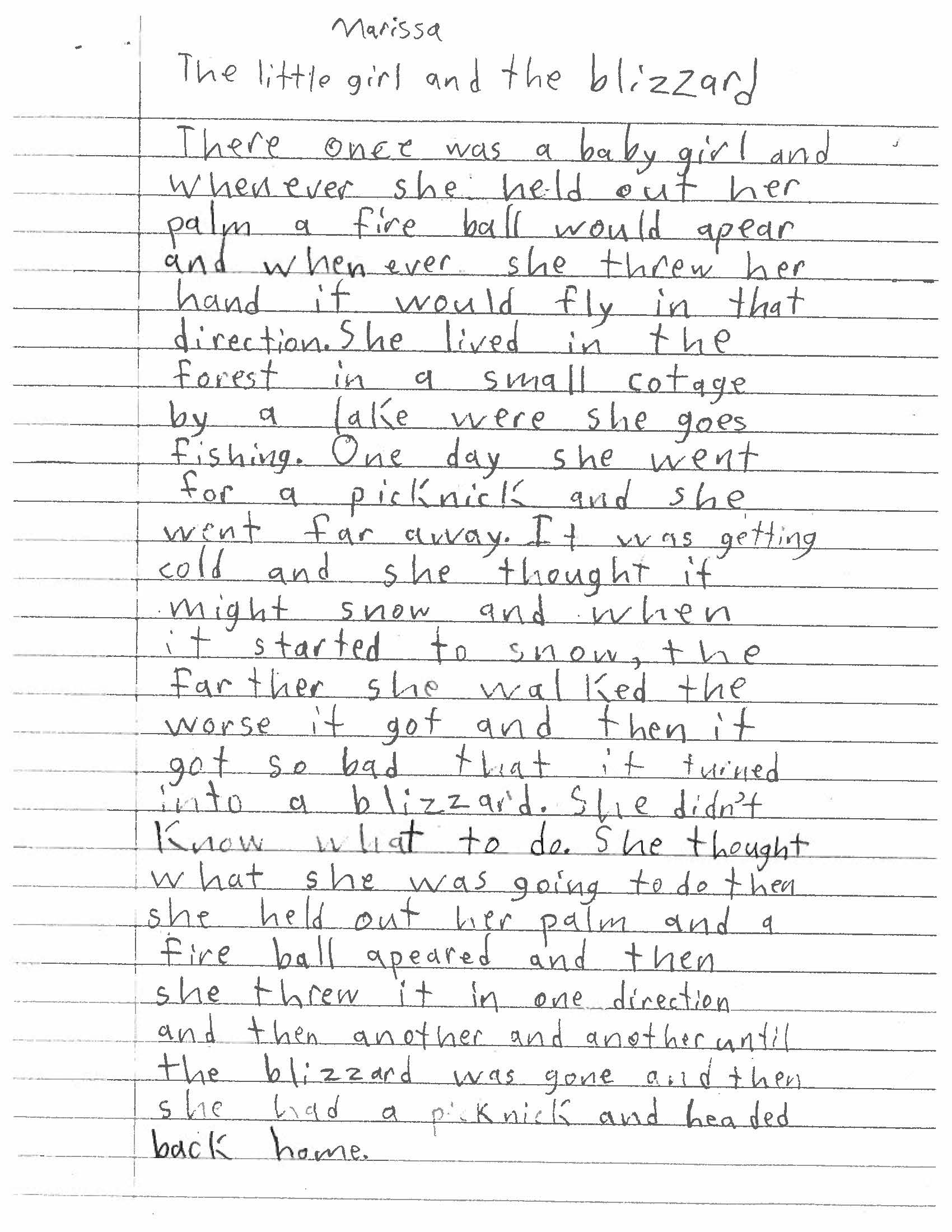
On a rainy day in June 2019, Enman read the story during the dedication of a granite bench in Marissa’s name. School staff, along with Marissa’s grandfather and aunt, gathered around the Bangor Cascade Park bench that features Marissa’s school portrait, an etching of the books she loved to read and the words: In loving memory of Marissa Kennedy.
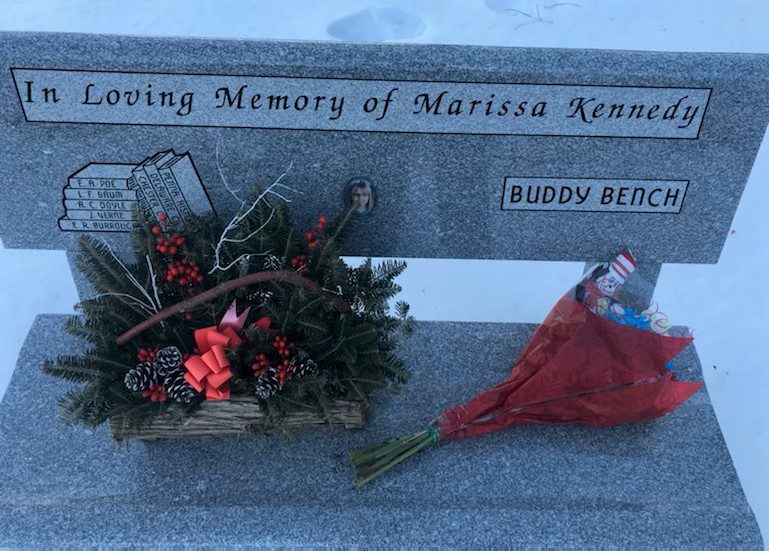
Several in the crowd cried as Enman recited Marissa’s story about the little girl who overcame the blizzard and went on a picnic before heading home.
Enman believes Marissa’s story chronicles the 10-year-old’s struggle to survive.
“Was she writing about her abuse?” Enman asks. “Certainly, from my perspective, it was an example of the inner battle she was fighting. The battle of her life just to have a little peace and go on a picnic.”
Maine’s child abuse hotline is available 24 hours a day, seven days a week. If you suspect child abuse or neglect, call 800-452-1999. Calls may be made anonymously. Click here for more information on the reporting process.


